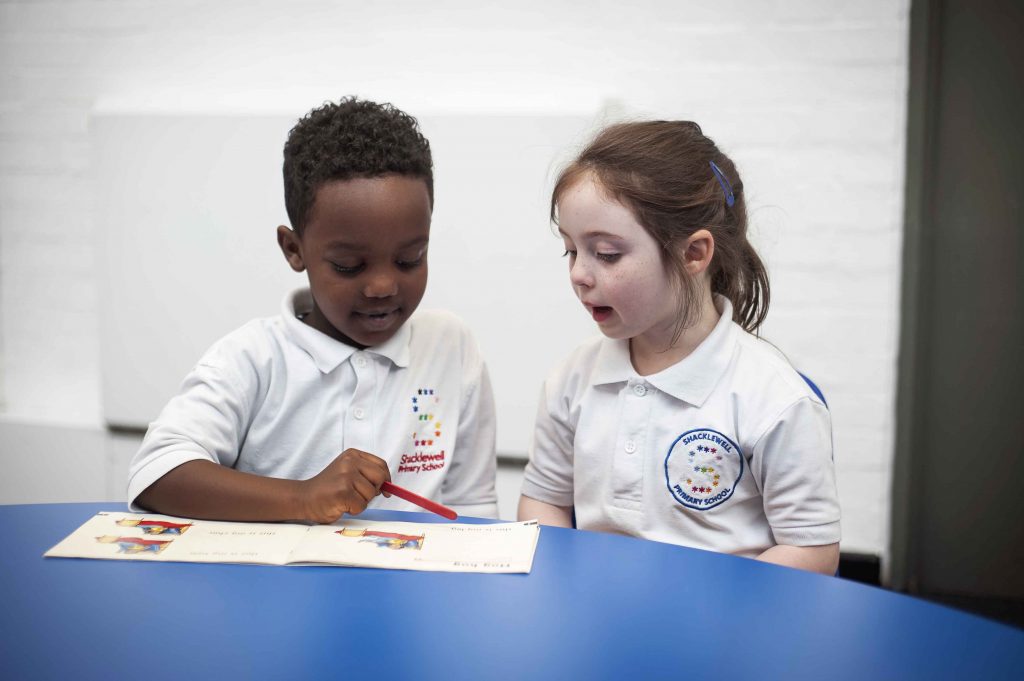DO
1. Have enough tables available for children to practise at the same time (where have all the tables gone?).
2. Practise handwriting every day with the whole class for 10 to 15 minutes – that means everychild.
3. Provide books with plain paper for early formation and then wide lines when you teach them size and relative position.
4. Provide sharp pencils. Triangular grips and pencils help beginner writers – they make the tripod grip much easier to teach.
5. Practise sitting in the perfect handwriting position. Once automatic, use a signal or say ‘Ready to write’ to trigger this position.
- Hand ready in a tripod grip – teach children how to do this right from Day 1.
- Feet on the floor ?
- Bottom at the back of the chair ?
- Body one fist from the table ?
- Shoulders down and relaxed ?
- Lean forward slightly ?
- Left/right hand holds the page ?
6. Once the children know the handwriting phrases, start to use the Mental Checklists from the online Phonics handwriting resource. These help children remember more detail about the letter formation, e.g. for g ‘Start at her hair bobble, go round her face, under her chin, back up to the bobble and draw her long hair and finish with a curl.’ (Read Write Inc. online provides all of these.)
7. Use ‘Demonstrate, Practise, Review’
Help children to build a mind picture of the formation before they start to write.
Demonstrate: Say the mental checklist as you write the letter. Repeat a few times, asking the children to use the checklist to tell you how to write the letter.
Practise: Cover up the letter and ask children to write the letter until you stop them, saying the checklist out loud. Walk round quickly and identify a common error.
Review Write the letter on the board including the common error. Ask children to turn to their partner and look for ‘Two best bits and one to fix’. Demonstrate writing the letter correctly. Repeat the steps until all children form the letter correctly- if not neatly.
8. Practise one or two new letters each day.
DON’T
1. Don’t allow children to write sitting on the floor – ever. It is uncomfortable, encourages bad posture and a poor handwriting position.
2. Don’t use whiteboards and pens. Children can’t learn a tripod grip with a fat chunky pen.
3. Don’t use entry strokes.
4. Do not teach joins. Ofsted do not insist on this – I’ve checked. See my blog: Some joined up thinking about dyslexic children and joined up writing.
5. Do not ask children to copy from the board or a handwriting book. They need to have a strong ‘mind picture’ of the letter formation before they start to write.

